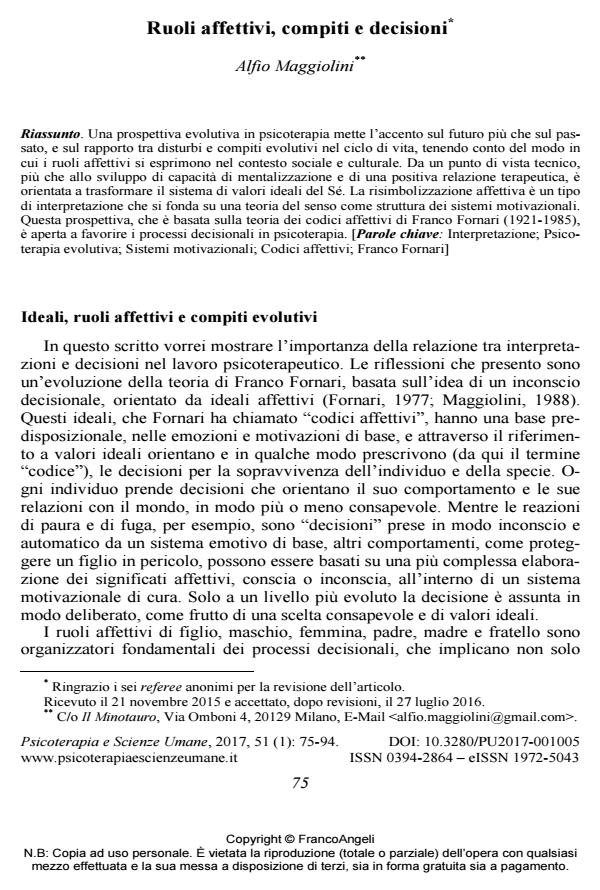Affective roles, tasks and decisions.
Journal title PSICOTERAPIA E SCIENZE UMANE
Author/s Alfio Maggiolini
Publishing Year 2017 Issue 2017/1
Language Italian Pages 20 P. 75-94 File size 100 KB
DOI 10.3280/PU2017-001005
DOI is like a bar code for intellectual property: to have more infomation
click here
Below, you can see the article first page
If you want to buy this article in PDF format, you can do it, following the instructions to buy download credits

FrancoAngeli is member of Publishers International Linking Association, Inc (PILA), a not-for-profit association which run the CrossRef service enabling links to and from online scholarly content.
A developmental perspective on psychotherapy focuses on the future more than on the past, and on the relationship between disorders and developmental tasks in the life cycle, taking into account the way affective roles are realized in a social and cultural context. From a technical point of view, rather than the development of mentalizing capacity and of a positive therapeutic relationship, it is aimed at transforming the system of ideal values of the self. Affective re-symbolization is a type of interpretation grounded in a theory of meaning as a structure of motivational systems. This perspective, based on Franco Fornari’s (1921-1985) theory of affective codes, is open to facilitate decision making in psychotherapy.
Keywords: Interpretation; Developmental psychotherapy; Motivational systems; Affective codes; Franco Fornari’s theory
Alfio Maggiolini, Ruoli affettivi, compiti e decisioni in "PSICOTERAPIA E SCIENZE UMANE" 1/2017, pp 75-94, DOI: 10.3280/PU2017-001005